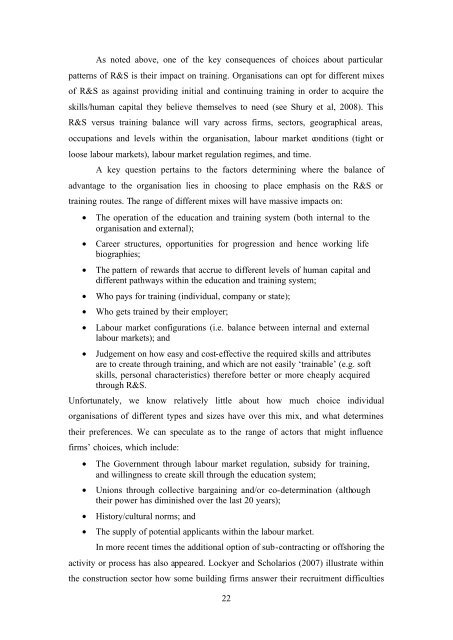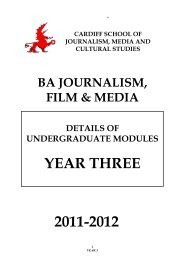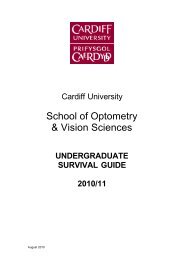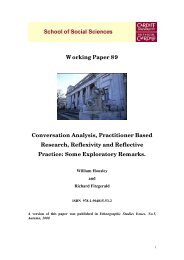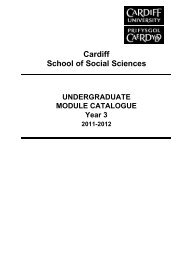Recruitment and Selection â the Great Neglected ... - Cardiff University
Recruitment and Selection â the Great Neglected ... - Cardiff University
Recruitment and Selection â the Great Neglected ... - Cardiff University
You also want an ePaper? Increase the reach of your titles
YUMPU automatically turns print PDFs into web optimized ePapers that Google loves.
As noted above, one of <strong>the</strong> key consequences of choices about particular<br />
patterns of R&S is <strong>the</strong>ir impact on training. Organisations can opt for different mixes<br />
of R&S as against providing initial <strong>and</strong> continuing training in order to acquire <strong>the</strong><br />
skills/human capital <strong>the</strong>y believe <strong>the</strong>mselves to need (see Shury et al, 2008). This<br />
R&S versus training balance will vary across firms, sectors, geographical areas,<br />
occupations <strong>and</strong> levels within <strong>the</strong> organisation, labour market conditions (tight or<br />
loose labour markets), labour market regulation regimes, <strong>and</strong> time.<br />
A key question pertains to <strong>the</strong> factors determining where <strong>the</strong> balance of<br />
advantage to <strong>the</strong> organisation lies in choosing to place emphasis on <strong>the</strong> R&S or<br />
training routes. The range of different mixes will have massive impacts on:<br />
• The operation of <strong>the</strong> education <strong>and</strong> training system (both internal to <strong>the</strong><br />
organisation <strong>and</strong> external);<br />
• Career structures, opportunities for progression <strong>and</strong> hence working life<br />
biographies;<br />
• The pattern of rewards that accrue to different levels of human capital <strong>and</strong><br />
different pathways within <strong>the</strong> education <strong>and</strong> training system;<br />
• Who pays for training (individual, company or state);<br />
• Who gets trained by <strong>the</strong>ir employer;<br />
• Labour market configurations (i.e. balance between internal <strong>and</strong> external<br />
labour markets); <strong>and</strong><br />
• Judgement on how easy <strong>and</strong> cost-effective <strong>the</strong> required skills <strong>and</strong> attributes<br />
are to create through training, <strong>and</strong> which are not easily ‘trainable’ (e.g. soft<br />
skills, personal characteristics) <strong>the</strong>refore better or more cheaply acquired<br />
through R&S.<br />
Unfortunately, we know relatively little about how much choice individual<br />
organisations of different types <strong>and</strong> sizes have over this mix, <strong>and</strong> what determines<br />
<strong>the</strong>ir preferences. We can speculate as to <strong>the</strong> range of actors that might influence<br />
firms’ choices, which include:<br />
• The Government through labour market regulation, subsidy for training,<br />
<strong>and</strong> willingness to create skill through <strong>the</strong> education system;<br />
• Unions through collective bargaining <strong>and</strong>/or co-determination (although<br />
<strong>the</strong>ir power has diminished over <strong>the</strong> last 20 years);<br />
• History/cultural norms; <strong>and</strong><br />
• The supply of potential applicants within <strong>the</strong> labour market.<br />
In more recent times <strong>the</strong> additional option of sub-contracting or offshoring <strong>the</strong><br />
activity or process has also appeared. Lockyer <strong>and</strong> Scholarios (2007) illustrate within<br />
<strong>the</strong> construction sector how some building firms answer <strong>the</strong>ir recruitment difficulties<br />
22


